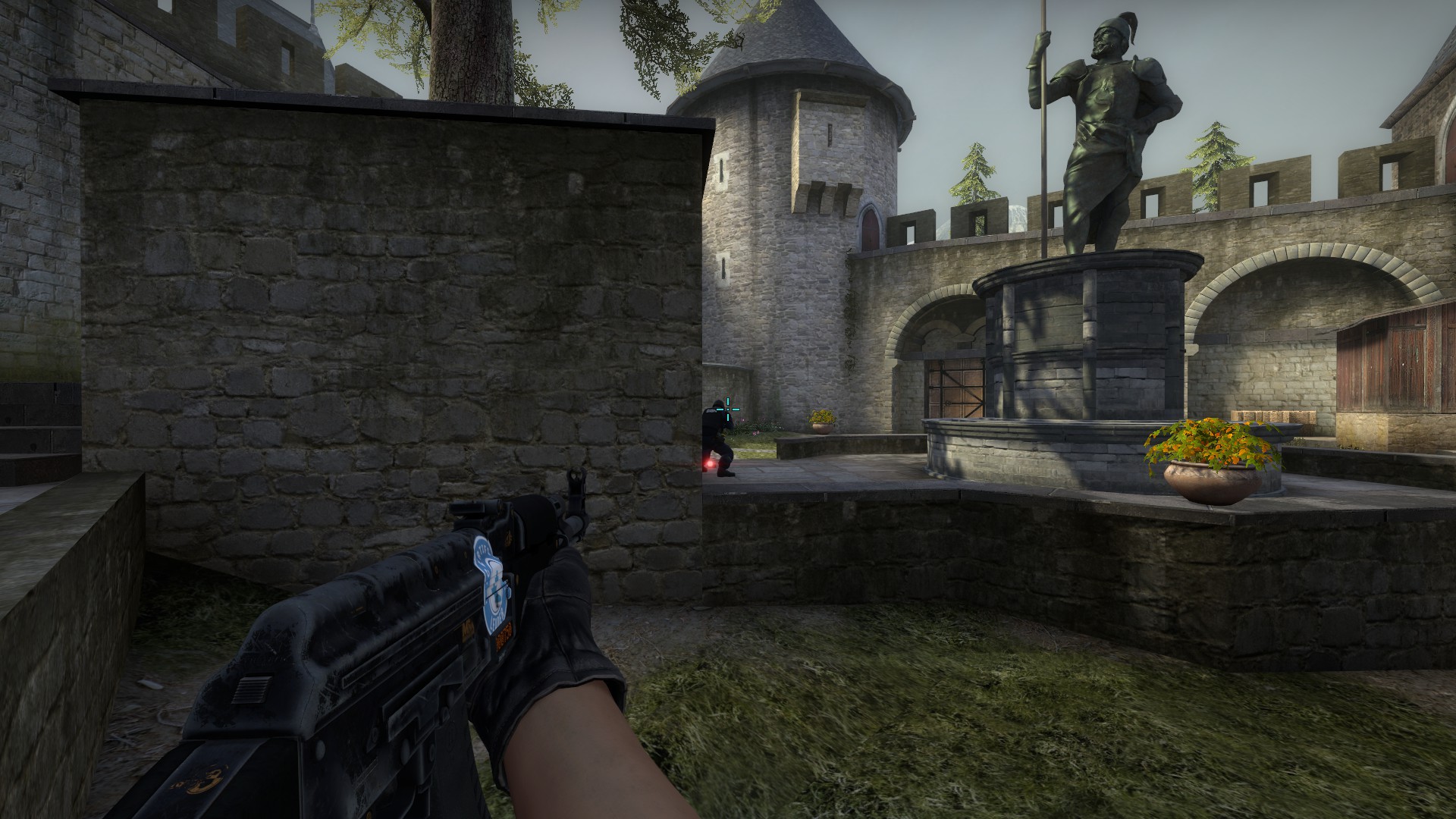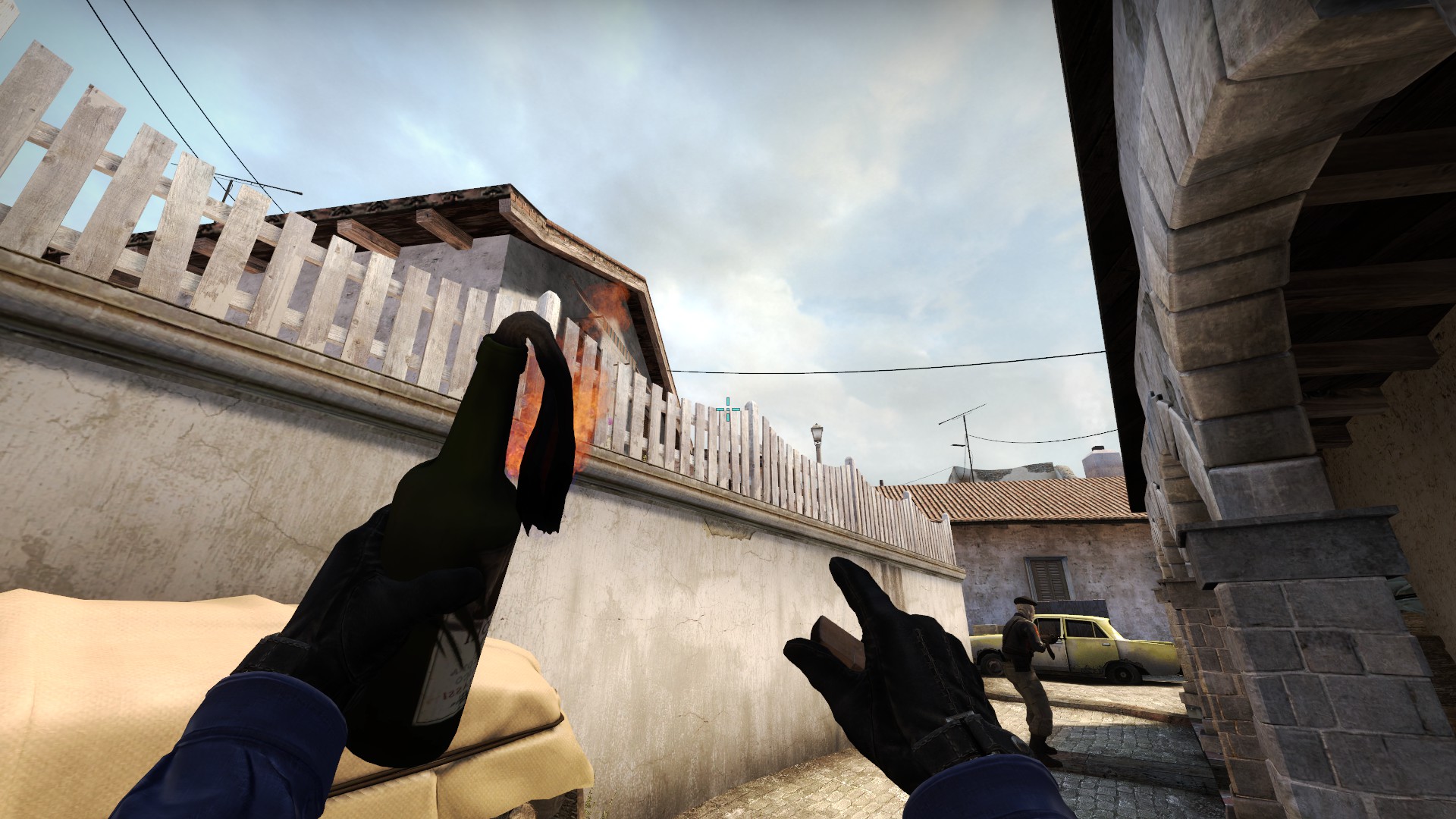Improve your support play in Counter-Strike: Global Offensive

There is an ongoing debate whether players should be assigned roles in Counter-Strike: Global Offensive. Some argue that there are no roles and that each player has his or her own way of playing the game—that a team’s success comes down to chemistry and individual skill.
Others, myself included, believe that roles help you to systematise the way you approach the game. Anyone can throw a flashbang around a corner, that’s true. But think about it: there are seven maps in the pool. Let’s say your team practices five of those, and that each map has at least a hundred useful flashbangs, smokes and molotovs. Learning all of those grenades takes a lot of work.
Sure, every player should practice grenades, but doesn’t it make sense to have that one guy on your team who specialises in just that? Someone who can flash you in from any angle on the map?
What does a support do?
Here’s what a defines a support player the way I see it: a support player should spend a lot of time learning all sorts of grenades and when to throw them. If your in-game leader says that your opponents tend to play from a specific spot, the support player should know a grenade that will make life harder for them in that specific circumstance.
Just like with all roles in CS:GO, communication is super important. The support should be good at adapting their play according to the information that their teammates provide. In my mind the support player should focus more on the tactical aspect of the game than most players. A lot of the time the support will carry the bomb, and it’s their job to know whether it’s best to help with clearing the site or go for the plant. Every situation is unique, but if you play and study the game enough, you will have a pretty good idea of what the best play is.
Because of the nature of the role, the support player will often be the last man alive, so it’s important that he or she has good game sense and is creative enough to win 1-on-X situations.
Outside of matches, it’s important that the support player spends time talking to the in-game leader so that they know what grenades they should spend the most time practicing. It’s also common for the in-game leader to play a support role themselves, as they know exactly where and when they want key grenades to be thrown.
Keep up to date with the most important stories and the best deals, as picked by the PC Gamer team.
An example of pro support play
This example is taken from the Brazilian team Luminosity’s game against the Poles from Virtus.Pro at MLG Columbus. Luminosity went on to win the game and, eventually, the Major. A much deserved victory after insane comebacks achieved with a smart, disciplined style.
The player making the support plays in this example is Lincoln ‘fnx’ Lau. Note: he’s not considered a pure support player, but this round in particular illustrates a lot of different things that I’d like to see from a support.
There’s a lot happening in this clip. First we see fnx stand ready with a flashbang towards upper park from playground. Gabriel ‘FalleN’ Toledo peeks with the AWP. Should he spot someone pushing long, fnx would throw their flash and Marcelo ‘coldzera’ David, FalleN and even fnx himself are ready to clean up.
This time no one’s pushing, so they decide to take control over long. Coldzera throws a molotov over to the tree area. Then they wait for a second before fnx flashes. Following the flash, coldzera immediately jumps out to bait a shot from any snipers on long and then FalleN steps out with their AWP in order to either catch a player backing off from the tree out of position or—as in this case—to kill the sniper further back.
In the next sequence fnx briefly plays the entry role by jumping across the restroom entrance so that coldzera can pick up a kill if a CT stands there—which isn’t the case this time. After that fnx tries to gather information as safely as possible towards the A-site by jumping, before he smokes off the chokepoint. As he moves closer to the site, he’s lucky enough to find an extra flashbang. Before the smoke fades, he throws a molotov over to the corner to the left of the smoked-off chokepoint in order to clear another angle for their team.

As the smoke starts to fade, he pops a flash through it. At that point, he’s in a great position to trade kills for their teammates. As soon as coldzera goes down outside restroom, fnx pushes forward, aware that he might need to make a play. After the site is cleared and the bomb is planted, he moves inside the bank for a great post-plant position and manages to kill a rotating Virtus.pro player.
This round shows a lot of good plays that we can learn from. As you could see, fnx did a lot of different things and even if you call yourself a support player it’s important that you can adapt to the situation and do what’s needed to help your team win the game.
Who can play support?
The lazy answer is ‘anyone’. Anyone can throw grenades, carry bombs and pick up a kill every now and then. But let’s return to my previous definition of what a support player is: a player is someone who is good at throwing grenades, is interested in the tactical aspect of the game, and can come out on top in clutch situations.
If you want a good support player on your team you should look for a highly intelligent individual who’s good at reading the game and can adapt to different situations as the play develops. It’s also important that he or she is patient and dedicated enough to learn all the necessary grenades. A support is a player who always puts their team first. These players are rare gems, in my book. Not everyone has what it takes to spend hours upon hours on empty servers trying to perfect grenade throws.
There’s also a creative aspect to the support role. As you spend all those hours trying out grenades you’ll find that you come up with new strategies and plays that can be useful to your team. I’d say that support players are like bass players in bands. They’re a key part of the system, but often they get a lot less praise than they deserve. If you think you can do all these things and have all these qualities you might be destined for a support role.

How to practice
CS:GO offers an almost infinite number of ways you can practice and I won’t be able to cover them all. First up, you will never be a good CS:GO player unless you’re good at shooting and nothing can replace hours spent on deathmatch servers.
For the support stuff, however, I’d recommend that you head to an empty server to practice grenades. YouTube is a great resource when it comes to tutorials, and I covered many map-specific grenade throws in my CS:GO map guide series: you can find links to allow of them at the bottom of this article. You can also try to come up with your own grenades. Find a spot you want to flash or smoke and try doing it from different angles. Get a friend to join and hold from different positions so that he can let you know if he got flashed or not.
One thing you need to ensure is that you’re on a 128 tick server. If you play on 64 tickrate servers (matchmaking servers are 64 tick) the grenades’ trajectories will be slightly different. Normally that’s not a problem, but for the more advanced throws it can make a huge difference.
Next I’d recommend that you try to find so-called retake servers. On those servers the terrorists spawn on a bombsite with the bomb and the CTs spawn in different retake positions. You’ll also be able to choose what weapon you’ll spawn with. This is a great non-competitive environment to try out your grenades. It will also help you improve your decision making in clutch situations. Just like with everything else in life, you get better at what you spend a lot of time doing. If you’ve been in a 1-on-1 situation on dust2’s B-site a thousand times and your opponent’s been in the same situation a couple of hundred times you’re at a massive advantage.
I went on a retake server to show you guys how it works. This one is a pistols only server on Mirage:
I came up through connector and decided to peek towards CT-spawn. When I saw that my teammate in spawn was battling it out with a terrorist on the minimap I decided to peek another angle. As soon as the CT in spawn died I knew there was a possibility that the T would peek from that angle so I checked it again.
The bomb was ticking away so I had no choice but to go for a play. I got lucky and timed the peek from the terrorist inside palace and I spotted another one on T-ramp. When my last teammate died I knew the positions of both terrorists so I decided to take the fight with the one in CT-spawn in order to bait the other guy to push up, which he did, and I managed to pick up another kill. Unfortunately I fell short on the last duel because of bad crosshair placement—and that I took too long before I went for a play earlier in the round.
That breakdown of my round brings me to my next piece of advice: record your matches and watch the demos afterwards. Try to look for the things you did well and determine the reason why those things worked. But more importantly, look at what didn’t work and try to come up with things you could’ve done differently. You can also let a more experienced player take a look at your demos and give you advice.
Watch the pros
Another thing you can (and should) do is to watch demos of pro teams. Watching streams and VODs is great fun, but you won’t be able to rewatch rounds from different perspectives like you can if you watch demos in-game.
A good resource for demos is HLTV.org. Find a match you want to watch and download the GOTV demo. Once you’ve done that you launch the game and press ALT + F2 to bring up the demo UI—or you can type “demoui” in the console. Then press “load”, find the demo you want to watch and press play.
There’s not a single pro player who plays support roles in every single round and on all maps, but there are some players that I’d recommend you to watch. Freddy ‘KRIMZ’ Johansson from fnatic is one. He’s one of the smartest players in all of CS:GO. Andreas ‘Xyp9x’ Højsleth from Astralis is another. He’s great at throwing grenades and can find what looks like impossible clutch kills. Watch how they play, try to get a sense of their decision-making, and do your best to apply it to your own game.
Find all of our Counter-Strike: Global Offensive guides here:
Inferno Counter-Terrorist guide
Inferno Terrorist guide
Cache Counter-Terrorist guide
Cache Terrorist guide
Overpass Counter-Terrorist guide
Overpass Terrorist guide
Cobblestone Counter-Terrorist guide
Cobblestone Terrorist guide
Train Counter-Terrorist guide
Train Terrorist guide
Mirage Counter-Terrorist guide
Mirage Terrorist guide
Dust2 Counter-Terrorist guide
Dust2 Terrorist guide
Entry fragger role guide
Lurker role guide
AWPer role guide
Team leader guide

